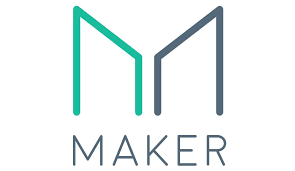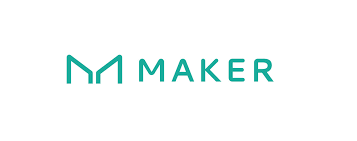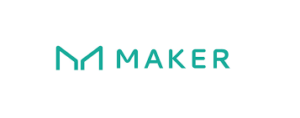Latest News
- Maker: Can short-term bullishness push MKR towards $1500?
- BlockDAG’s 2,380% ROI Wows Crypto World After Keynote 3—Outpacing OP’s $906M TVL and MKR’s $20B Peak
- Maker (MKR) Jumps 11%, Reaches Weekly Peak Amid Rising On-Chain Activity
- Crypto Market News for Today—CRV, MKR, CFX Spike While MOVE, IP and Hype Face Huge Losses
The Maker Protocol stands as a cornerstone in the decentralized finance (DeFi) landscape, primarily through its governance token, MKR.
This token plays a vital role in maintaining the stability of the DAI stablecoin, which is pivotal for a range of financial applications.
While MKR token offers unique advantages and opportunities for community engagement, it also faces challenges stemming from market volatility and regulatory scrutiny.
As we explore the intricacies of MKR, its potential benefits and inherent risks warrant careful consideration, particularly in the context of its future trajectory within the evolving DeFi ecosystem.
Ready to learn more? Let’s go…
Quick Overview
- Maker (MKR) serves as the governance token for the Maker Protocol, influencing decision-making and ecosystem stability through community voting.
- MKR holders help maintain DAI’s peg to the U.S. dollar, absorbing losses and ensuring reliability in a volatile market.
- The token operates on a deflationary model, potentially increasing its value as demand for the DAI stablecoin rises.
- Investing in MKR involves risks, including market volatility, regulatory uncertainty, and technological developments impacting the DeFi landscape.
- Future MKR growth relies on successful ecosystem developments, regulatory clarity, and overall expansion of the DeFi sector.
Here’s a great review video:
Overview of Maker Protocol
The Maker Protocol represents a significant innovation in the domain of decentralized finance (DeFi), embodying the principles of stability and transparency that underpin its operations.
At its core, the protocol facilitates the creation of a stablecoin, known as DAI, which is pegged to the U.S. dollar. This peg is maintained through a system of collateralized debt positions (CDPs) where users lock up various cryptocurrencies as collateral to generate DAI.
The Maker Protocol employs an algorithmic governance model, enabling MKR token holders to vote on key decisions regarding the protocol’s parameters and risk management strategies. This decentralization of governance fosters community involvement, ensuring that the protocol evolves in line with stakeholder interests.
Moreover, the protocol incorporates mechanisms such as stability fees and liquidation processes to maintain the integrity of the DAI stablecoin. By routinely adjusting these parameters based on market conditions, the Maker Protocol aims to mitigate volatility and enhance its resilience.
As a pioneering entity in the DeFi landscape, the Maker Protocol exemplifies a robust framework that balances user autonomy with systemic stability, highlighting its potential to reshape traditional financial paradigms.
What Is Mkr?
MKR, or Maker, is the governance token of the Maker Protocol, playing an indispensable role in maintaining the stability and functionality of the ecosystem.
As a decentralized finance (DeFi) platform built on the Ethereum blockchain, Maker enables users to create and manage the DAI stablecoin, which is pegged to the US dollar. MKR holders participate in the governance process, making critical decisions regarding the protocol’s operations, including risk management and collateral types.
The token operates on a dual-token model alongside DAI. MKR is used to absorb losses within the Maker ecosystem, ensuring the stability of DAI. In instances where the system incurs deficits, MKR is minted and sold to raise capital, effectively diluting existing holders but safeguarding DAI’s peg.
Moreover, MKR holders can vote on governance proposals, which can include adjustments to collateralization ratios, interest rates, and system parameters. This participatory model promotes decentralized decision-making, aligning the interests of MKR holders with the protocol’s health.
Consequently, MKR is not merely a cryptocurrency but a crucial instrument for governance and risk management within the Maker Protocol, directly influencing its sustainability and success in the competitive DeFi landscape.

The Role of DAI Stablecoin
DAI stablecoin plays a pivotal role within the Maker ecosystem by providing a decentralized and stable medium of exchange, essential for various financial applications.
Its stability mechanism, which relies on collateralized debt positions and a system of incentives, guarantees that DAI maintains its peg to the US dollar.
Additionally, DAI’s diverse use cases, ranging from lending and borrowing to payments, highlight its significance in the broader DeFi landscape.
DAI’s Stability Mechanism
In the domain of decentralized finance, the stability of the DAI stablecoin emerges as a pivotal component in maintaining equilibrium within the Maker ecosystem. DAI’s mechanism for stability is primarily governed by its collateralized debt position (CDP) system and the use of smart contracts. This design enables DAI to maintain its peg to the US dollar, offering users a reliable medium of exchange and store of value.
The stability mechanism functions through several key elements:
- Collateralization: Users deposit various cryptocurrencies as collateral to mint DAI, guaranteeing that each DAI issued is backed by a surplus of collateral.
- Liquidation Process: If the value of the collateral falls below a predetermined threshold, the system automatically liquidates the collateral to maintain the integrity of the DAI supply and guarantee solvency.
- Stability Fees: Users must pay stability fees when repaying their loans, incentivizing the timely return of DAI and discouraging excessive borrowing.
Together, these components create a robust framework that underpins DAI’s stability, allowing it to thrive in the volatile landscape of cryptocurrency markets while supporting the larger Maker ecosystem.

DAI’s Use Cases
A multitude of use cases demonstrates the versatility and significance of the DAI stablecoin within the decentralized finance (DeFi) landscape. As a decentralized stablecoin pegged to the US dollar, DAI serves as a reliable medium of exchange, enabling users to conduct transactions without the volatility typically associated with cryptocurrencies. This stability allows DAI to be utilized for everyday purchases, remittances, and as a unit of account in various decentralized applications (dApps).
Moreover, DAI plays an essential role in lending protocols, where users can collateralize their assets to mint DAI, effectively leveraging their holdings. This functionality enhances liquidity while providing users with access to capital without needing to liquidate their assets.
Additionally, DAI is instrumental in yield farming and liquidity mining strategies, allowing users to earn passive income by providing liquidity to various DeFi platforms. DAI also serves as a hedge against market volatility, enabling users to preserve their purchasing power in uncertain market conditions.
Key Features of MKR
Six primary features define the functionality and utility of Maker (MKR), a pivotal component of the Maker Protocol. As a governance token, MKR plays a significant role in the decision-making processes that shape the future of the protocol, ensuring its adaptability and resilience.
One of the most significant features is the decentralized governance model, where MKR holders can vote on proposals affecting the system’s parameters. This model enhances transparency and community involvement.
Additionally, MKR serves as a risk management tool; it acts as collateral in the event of under-collateralization within the ecosystem.
Other key features include:
- Stability Fee Payments: MKR holders contribute to the stability of DAI by paying fees, which are burned, reducing the total supply and potentially increasing value.
- Liquidation Mechanism: MKR is integral to the liquidation process of collateralized debt positions, safeguarding the system against defaults.
- Earning Opportunities: By participating in governance and contributing to DAI’s stability, MKR holders can earn rewards, enhancing their engagement with the protocol.
These features collectively position MKR as an essential element driving the Maker Protocol’s success and sustainability.
Benefits of Investing in MKR
Investing in MKR presents numerous advantages that appeal to both individual investors and institutional stakeholders. One of the primary benefits is its unique position within the decentralized finance (DeFi) ecosystem. MKR serves as a governance token for the Maker Protocol, which underpins the stablecoin DAI. This governance structure allows MKR holders to influence key decisions, including risk parameters and collateral types, thereby fostering a sense of community and alignment with the protocol’s long-term success.
Additionally, MKR holders benefit from the stability mechanisms of the Maker Protocol. As DAI maintains its peg to the US dollar, the utility of MKR increases, particularly as demand for stablecoins rises in the evolving DeFi landscape. This demand can potentially lead to appreciation in the value of MKR, making it an attractive investment option.
Moreover, MKR operates within a deflationary model, where the token is burned during periods of system instability to maintain DAI’s peg. This built-in scarcity can enhance MKR’s value proposition over time.

Risks Associated With MKR
Investing in Maker (MKR) presents several risks that potential investors must carefully consider.
The inherent volatility of cryptocurrency markets can lead to significant price fluctuations, impacting the value of MKR holdings.
Additionally, ongoing regulatory uncertainty surrounding decentralized finance may pose challenges that could affect the operation and adoption of the Maker ecosystem.
Market Volatility Impact
Amid the dynamic landscape of cryptocurrency, the volatility of the market presents significant risks for holders of Maker (MKR) tokens. The fluctuations in price can be pronounced and rapid, leading to potential financial losses for investors who are not prepared for such market conditions. This volatility can be attributed to several factors inherent to the cryptocurrency ecosystem.
- Market Sentiment: Sudden changes in investor sentiment can lead to sharp price movements, impacting MKR’s value.
- Liquidity Issues: Low trading volumes may exacerbate price swings, making it more challenging to execute trades at desired prices.
- Technological Developments: Innovations or setbacks within the Maker ecosystem or the broader DeFi space can influence market perceptions and ultimately MKR’s price.
For MKR holders, these elements of volatility necessitate a thorough understanding of the market’s behavior and a proactive approach to risk management.
While the potential for high returns exists, so does the risk of substantial losses, underscoring the importance of informed decision-making in this unpredictable environment.
Regulatory Uncertainty Challenges
How might regulatory uncertainty impact the future of Maker (MKR) in the rapidly evolving landscape of decentralized finance?
Regulatory ambiguity poses significant challenges to Maker, a cornerstone of the DeFi ecosystem. As governments worldwide grapple with how to classify and regulate cryptocurrencies, the potential for stringent regulations could hinder Maker’s operational model, which relies on smart contracts and decentralized governance.
The potential for increased regulatory scrutiny may deter institutional investors, as compliance costs and legal risks rise. Moreover, if regulators classify MKR as a security, it could necessitate significant changes to its governance and operational framework, undermining the principles of decentralization that are central to its value proposition.
Conversely, clearer regulations could bolster the legitimacy of Maker and the DeFi space, attracting more users and investments.
However, the unpredictable nature of regulatory developments creates an environment of uncertainty that can lead to market volatility and hinder long-term strategic planning for Maker’s management team.
Ultimately, maneuvering through these regulatory challenges will be essential for Maker’s sustainability and growth in the competitive DeFi landscape, necessitating proactive engagement with regulators and adaptability to evolving legal frameworks.
How to Buy MKR
Acquiring Maker (MKR) tokens involves several steps that require careful consideration and planning. As a decentralized finance (DeFi) asset, MKR can be purchased through various platforms, each with its own set of procedures and security measures. Understanding these can facilitate a smoother acquisition process.
To effectively buy MKR, consider the following steps:
- Choose a Cryptocurrency Exchange: Select a reputable exchange that supports MKR trading. Popular options include Binance, Coinbase, and Kraken. Confirm the exchange complies with local regulations.
- Create and Verify Your Account: Sign up for an account and complete any necessary verification processes. This may include providing identification and proof of residence to comply with Know Your Customer (KYC) regulations.
- Deposit Funds: Fund your account using fiat currency or another cryptocurrency. Different exchanges offer various deposit methods, including bank transfers and credit card payments.
Once these steps are completed, you can place an order for MKR tokens.
It is advisable to monitor market conditions and set appropriate limits to optimize your investment strategy. Always prioritize security by enabling two-factor authentication and using secure wallets for long-term storage.
MKR’s Market Performance
Following the completion of the purchasing process, understanding MKR’s market performance is essential for investors seeking to gauge the asset’s potential and make informed decisions.
MKR, the governance token for the Maker Protocol, operates within the decentralized finance (DeFi) ecosystem, reflecting broader trends in cryptocurrency markets.
As of October 2023, MKR has demonstrated a volatile price trajectory, typical of many digital assets. Recent trading volumes indicate increased investor interest, particularly during market recovery phases.
The token’s price is influenced by several factors, including changes in the collateralization ratio of the Maker Vaults, governance proposals, and overall market sentiment.
MKR’s market capitalization places it among the notable cryptocurrencies, yet it remains susceptible to fluctuations driven by regulatory developments and technological advancements within the DeFi space.
The token’s utility in governance—such as voting on key protocol changes—adds a layer of intrinsic value that may influence investor confidence.
Future Outlook for MKR
As investors look ahead, the future outlook for MKR hinges on several essential factors that could influence its trajectory in the evolving DeFi landscape.
The Maker Protocol’s adaptability to regulatory changes, integration with other blockchain technologies, and the overall growth of the decentralized finance sector will play pivotal roles in shaping MKR’s value proposition.
Key considerations include:
- Regulatory Environment: With increasing scrutiny on DeFi platforms, MKR’s compliance with global regulations could enhance its legitimacy and attract institutional investors.
- Ecosystem Development: The success of new features and improvements within the Maker ecosystem, such as multi-collateral DAI and the potential introduction of additional collateral types, could bolster user engagement and adoption.
- Market Competition: MKR must navigate a competitive landscape filled with emerging DeFi projects.
Its ability to innovate and offer unique services will be essential in maintaining market share.
Frequently Asked Questions
How Does MKR Governance Affect the Maker Protocol?
MKR governance greatly influences the Maker Protocol by enabling MKR token holders to propose and vote on essential changes, including risk parameters and collateral types, thereby ensuring the protocol’s adaptability, security, and alignment with community interests.
What Are the Transaction Fees for Using Mkr?
Transaction fees for MKR can vary based on network congestion and platform usage. Typically, fees are calculated as a percentage of the transaction amount and are influenced by Ethereum gas prices, which fluctuate frequently.
Can MKR Be Staked for Rewards?
MKR tokens cannot be staked directly for rewards like traditional proof-of-stake assets. However, holders can engage in governance processes, influencing protocol decisions, which may indirectly yield benefits through enhanced network stability and token value appreciation.
Is MKR Compliant With Regulations?
The regulatory compliance of MKR primarily hinges on jurisdictional interpretations of cryptocurrency laws. Its decentralized governance model may present challenges, yet ongoing efforts to align with financial regulations are essential for broader acceptance and legitimacy in various markets.
What Wallets Support MKR Storage?
Various cryptocurrency wallets support MKR storage, including hardware wallets like Ledger and Trezor, as well as software wallets such as MetaMask and Trust Wallet. Each option offers different security features and user experience considerations.
Wrapping Up
To summarize, MKR serves as a fundamental component of the Maker Protocol, enabling governance and stability for the DAI stablecoin.
While the potential benefits of investing in MKR are substantial, including community engagement and innovative DeFi developments, inherent risks such as market volatility and regulatory challenges remain significant.
The future trajectory of MKR will largely depend on the broader advancements within the decentralized finance landscape, making ongoing observation essential for stakeholders.

